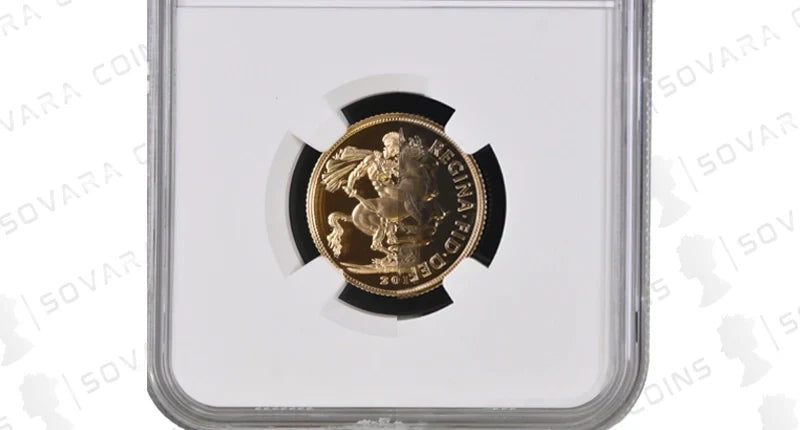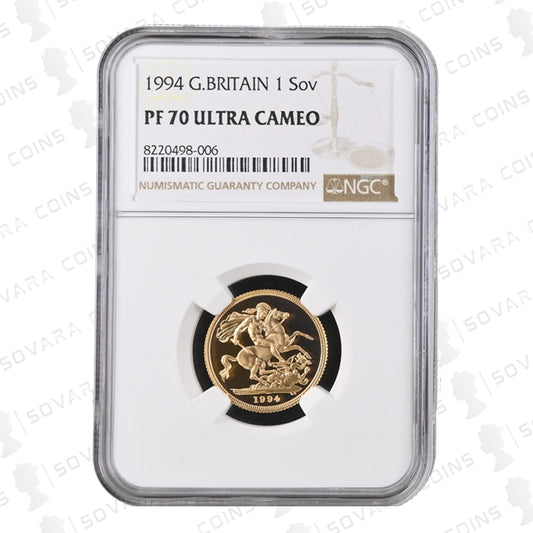
Most Valuable Royal Mint Error Coins – Rare UK Minting Mistakes Collectors Love
Share
Introduction: Why Error Coins Fascinate Collectors
For most collectors, perfection is the goal – flawless proof coins, pristine uncirculated strikes, and the coveted PF70 or MS70 grade. Yet, sometimes it’s the mistakes that make a coin truly desirable. Royal Mint error coins are among the most fascinating numismatic treasures, offering collectors a glimpse into the minting process when things didn’t go to plan. These coins can command staggering premiums because of their rarity, curiosity factor, and strong demand from enthusiasts who love the unusual.
But what exactly are error coins, which Royal Mint examples are most sought after, and why do they happen in the first place? Let’s explore.
What Are Mint Error Coins?
A mint error coin is any coin that leaves the mint with a flaw caused during the striking process. Unlike post-mint damage, genuine errors occur during manufacture, making them far rarer and more collectible. Common error types include:
-
Mis-strikes / Off-Centre Strikes – When the blank is not properly aligned under the dies.
-
Double Strikes – The coin is struck twice, leaving a shadowed or doubled image.
-
Wrong Planchet Errors – A design struck on the wrong metal blank (e.g. a 1p struck on a 10p blank).
-
Die Errors – Flaws in the die itself, such as doubled lettering or missing details.
-
Clipped Planchets – Coins missing a section of metal where the blank was mis-cut.
The Royal Mint has world-class quality control, but even the best systems cannot prevent the occasional mistake – and those mistakes now fetch thousands.
Famous Royal Mint Error Coins
1. The 2008 Undated 20p
Perhaps the most famous modern UK error coin, the undated 20p arose when the obverse (Queen’s portrait) die and reverse (new Royal Shield design) die were mismatched during production. This led to coins without a date – something that hadn’t happened in over 300 years.
-
Why it happened: A die mix-up during the transition from the old to new 20p design.
-
How rare: Estimated 200,000 in circulation.
-
Value: Often sells for £50–£100 depending on condition.
2. The 2016 “New Pence” 2p
By 1982, the reverse of the 2p coin should have read “Two Pence” rather than “New Pence.” However, in 2016, a small number of coins were accidentally struck using the old reverse die.
-
Why it happened: An old “New Pence” reverse die was mistakenly used.
-
How rare: Believed to be very limited; only a handful confirmed.
-
Value: Up to £1,000+ for a genuine example.
3. 1994 Bank of England £2 Trial Pieces
Before the bi-metallic £2 coin was officially launched in 1997, trial pieces were struck in 1994. Some escaped into the public domain, creating one of the most coveted Royal Mint “errors.”
-
Why it happened: Pre-release trial strikes not intended for circulation.
-
How rare: Extremely limited – believed to be under 5,000.
-
Value: £1,000–£2,000+ depending on condition.
4. The 2015 “Inverted Effigy” Britannia £2
The 2015 Britannia £2 was the first to feature Jody Clark’s portrait of Queen Elizabeth II. However, some examples show the Queen’s head rotated relative to the reverse design.
-
Why it happened: Misalignment of the obverse die during striking.
-
How rare: Rare but numbers unknown.
-
Value: Between £100–£200+, with prices rising as collectors chase them.
5. 1983 Two Pence “New Pence” Error
Although the inscription had been updated to “Two Pence” in 1982, a small batch of 1983 coins were struck with the outdated “New Pence” legend.
-
Why it happened: Use of an old reverse die.
-
How rare: Around 3,000 known.
-
Value: Can fetch £500–£700+ in top condition.
6. Royal Mint Sovereign Mint Errors
Even gold proof sovereigns – known for their meticulous quality – sometimes slip through with errors. Examples include:
-
Double-struck sovereigns (faint shadowing of the design).
-
Die polish lines or frosting errors (inconsistent cameo effect).
-
Misaligned strikes where the border beads appear off-centre.
-
Why it happened: Extremely rare lapses in the proof minting process.
-
How rare: Individual cases only; each unique.
-
Value: Premiums vary, often 2–5x standard issue value if recognised by grading services like NGC or PCGS.
Why Do Mint Errors Happen at the Royal Mint?
Despite world-leading quality control, errors occur because coin production is highly technical. Striking thousands of coins per hour at precision tolerances leaves room for occasional mistakes. Human oversight, die fatigue, or even a misloaded blank can all result in an error coin.
The key factor is rarity – errors are the exception, not the rule. Once identified, production is corrected immediately, making the few “escapees” hugely desirable.
Are Error Coins Worth Collecting?
Absolutely. Error coins tick all the boxes that collectors love:
-
Rarity – By definition, they are scarce.
-
Story – Each error has a fascinating background.
-
Value Growth – As awareness spreads, values usually rise.
-
Conversation Piece – They stand out in any collection.
Whether it’s a mis-struck sovereign, a wrongly dated 20p, or a trial £2, Royal Mint error coins are some of the most engaging numismatic pieces on the market.
Conclusion
Error coins remind us that even the most prestigious mint in the world can slip up – and those slip-ups often become history’s treasures. From the legendary undated 20p to rare sovereign mis-strikes, Royal Mint error coins are a blend of rarity, history, and collector appeal.
If you’re building a collection, keeping an eye out for errors can be as rewarding as chasing perfection. And when authenticated by grading services, these coins can command eye-watering premiums.











